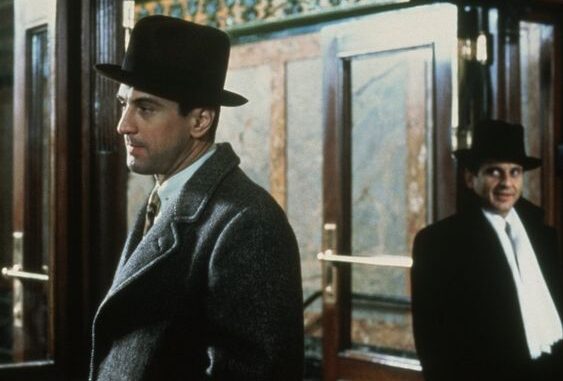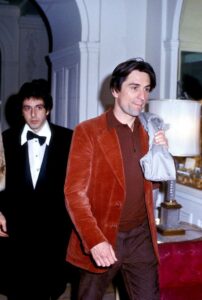
Robert De Niro at 80: His most memorable film roles

Robert De Niro turns 80 today – and what better time to celebrate the greatest film roles of one of the finest actors of all time?
We all know how good he was in Taxi Driver, The Godfather Part II, Raging Bull, The King of Comedy, and there’s every chance he may bag a third Oscar (after the 1975 Best Supporting Actor for The Godfather Part II and 1981’s Best Actor for Raging Bull) for the upcoming Killers of the Flower Moon – which we saw in Cannes this year. If he does, incidentally, he’ll set a new record for the longest gap between Oscar wins – 42 years.
In the meantime, the Euronews Culture team list their personal favourites of his… And some picks may surprise you.
In Martin Scorsese’s 1990 classic GoodFellas, Robert De Niro assumes a key role within an exceptionally memorable ensemble cast. While Joe Pesci and Ray Liotta deliver louder and more dynamic performances, it’s De Niro’s portrayal of the un-hinged Jimmy “The Gent” Conway that somehow manages to quietly steal the show. There’s one piece of acting from De Niro in this movie that especially stands out. An increasingly psychopathic Jimmy Conway sits at a bar, smoking a cigarette, when a menacing grin creeps across his face. In these brief seconds, De Niro manages to communicate to the audience his character’s plan to bump off his associate Morrie, all without uttering a single word of dialogue. It’s a perfect scene and one of the most subtle but brilliant pieces of on-screen acting ever. And I challenge you to find someone who looks cooler while smoking a cigarette than De Niro… I’ll wait.
Much as I have adored De Niro’s work playing host to Scorsese’s ample villains, the part of his closest to my heart is one filled with light. In Awakenings, De Niro plays Leonard Lowe, a victim of encephalitis lethargica suffering from locked in syndrome. When his doctor (played with tender grace by Robin Williams) gives him the experimental drug L-DOPA, it wakes him from his catatonic state. Based on neurologist Oliver Sacks’ 1973 memoir, Lowe experiences a short-lived but profound re-entry into waking life. Opposite Williams, De Niro is given a platform to perform the entirety of the human condition, distilled into a matter of months spent in a hospital facility. Though Sacks’ experimentation with L-DOPA ultimately lead to his patients relapsing into their original stasis, the film sells its message of life’s beauty thanks largely to De Niro’s humanitarian display. The same glint in his eye that makes you root for him even when he’s playing the most ghastly gangster brings you into the passion of a man so close to freedom but yet so far.
